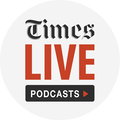
How New York estate agents fuel inequality and segregation
Loading player...
New York — A new book argues that the stratification in quality of life between New York’s rich and poor neighbourhoods is at least partially the result of real estate agents.
“Agents’ work in shaping buyers’ choices leads to upselling,” writes author Max Besbris, referring to the phenomenon of homebuyers starting with a predetermined budget then spending beyond it. “Repeated in aggregate, these practices create positive feedback loops that drive up prices in more expensive neighbourhoods.”
Those high prices, Besbris concludes, lead to a cascade of investments in wealthy neighbourhoods’ infrastructure, often at the expense of poorer neighbourhoods that haven’t experienced housing booms. “It costs more to live in certain neighbourhoods,” he writes, “and their high cost is deeply intertwined with their higher quality of life.”
The findings, which Besbris, an assistant professor of sociology at the University of Wisconsin, will publish in the forthcoming book Upsold: Real Estate Agents, Prices, and Neighbourhood Inequality (August 31, University of Chicago Press), were developed over years of research dating back to 2011.
Besbris followed 57 luxury home buyers, 49 of whom actually made offers on a house; interviewed nearly as many brokers; and created quantitative models, using addresses of licensed real estate sales people he acquired through a Freedom of Information Law Request to determine where those brokers were based.
“Right now, social scientists are really interested in various kinds of inequality in cities,” Besbris tells Bloomberg Pursuits. “I’ve used these statistical models, which show that neighbourhoods that have more real estate agents tend to be higher-priced neighbourhoods and also tend to be way more ethno-racially segregated.”
Brokers, in turn, “will tell you themselves that they act as neighbourhood boosters”, Besbris says, pushing clients to buy in areas the agents are already invested in. “That’s their job. They want the area to be marketable and valuable.”
That impulse, combined with the fact that “whiter neighbourhoods tend to have more real estate agents”, Besbris continues, means that brokers end up pushing clients to spend increasingly large sums of money in very specific neighbourhoods at the expense of others, in a compounding feedback loop that deepens inequality.
With that in mind, it’s unsurprising that wealthy buyers are upsold at the highest rate. “Middle-class families spending the median price to get an apartment will spend more than they [plan to] but it’s $10,000, $20,000 more,’ he says. “It’s the people who start out wanting to ...
“Agents’ work in shaping buyers’ choices leads to upselling,” writes author Max Besbris, referring to the phenomenon of homebuyers starting with a predetermined budget then spending beyond it. “Repeated in aggregate, these practices create positive feedback loops that drive up prices in more expensive neighbourhoods.”
Those high prices, Besbris concludes, lead to a cascade of investments in wealthy neighbourhoods’ infrastructure, often at the expense of poorer neighbourhoods that haven’t experienced housing booms. “It costs more to live in certain neighbourhoods,” he writes, “and their high cost is deeply intertwined with their higher quality of life.”
The findings, which Besbris, an assistant professor of sociology at the University of Wisconsin, will publish in the forthcoming book Upsold: Real Estate Agents, Prices, and Neighbourhood Inequality (August 31, University of Chicago Press), were developed over years of research dating back to 2011.
Besbris followed 57 luxury home buyers, 49 of whom actually made offers on a house; interviewed nearly as many brokers; and created quantitative models, using addresses of licensed real estate sales people he acquired through a Freedom of Information Law Request to determine where those brokers were based.
“Right now, social scientists are really interested in various kinds of inequality in cities,” Besbris tells Bloomberg Pursuits. “I’ve used these statistical models, which show that neighbourhoods that have more real estate agents tend to be higher-priced neighbourhoods and also tend to be way more ethno-racially segregated.”
Brokers, in turn, “will tell you themselves that they act as neighbourhood boosters”, Besbris says, pushing clients to buy in areas the agents are already invested in. “That’s their job. They want the area to be marketable and valuable.”
That impulse, combined with the fact that “whiter neighbourhoods tend to have more real estate agents”, Besbris continues, means that brokers end up pushing clients to spend increasingly large sums of money in very specific neighbourhoods at the expense of others, in a compounding feedback loop that deepens inequality.
With that in mind, it’s unsurprising that wealthy buyers are upsold at the highest rate. “Middle-class families spending the median price to get an apartment will spend more than they [plan to] but it’s $10,000, $20,000 more,’ he says. “It’s the people who start out wanting to ...

